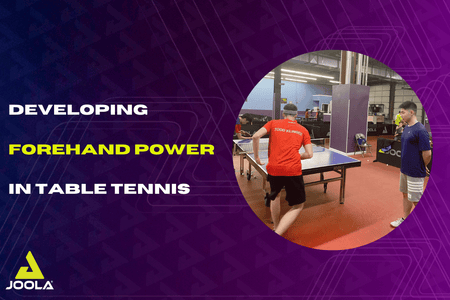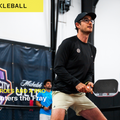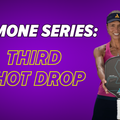
Developing Forehand Power in Table Tennis
Last week JOOLA Sponsored Club, the Maryland Table Tennis Center, announced Wang Cheng to be joining it’s coaching team. Wang shared some of his experience and expert knowledge with Team JOOLA on developing forehand power in table tennis.
Forehand power is a skill that all players want to develop. Technical ability is vital in China. Offensive player rely on forehand power to dominate opponents and close out points.
Here are some of the key aspects to developing greater power in your forehand strokes:
Analysis of Arm Stroke:
It is important to make sure that the shape of your stroke is correct and hinges at the right points. A forehand which is too small and hinges around the wrist or a forehand which swings mainly from the shoulder, are both inefficient and restrict transfer of power to the ball.
You want to make sure there is some space between your elbow and body, and that the shoulder, elbow, wrist and thumb and fingers all work together as part of a linear stroke to maximize power.
Weight Transfer:
Power in table tennis often comes from the ground, especially against backspin. There are many small parts which combine to create the best mechanics for forehand technique. To create a powerful forehand it is important to engage your legs and core.
Often weight is dropped onto the dominant leg, power starts by pushing with the front part of the foot to create a spring effect. The opposing force from the ground then transfers through the calves, quads, hips and then through core rotation into the arm stroke and finally the ball.
It is vital that the weight transfer controls the pace of all of these elements. They must work in harmony together to be most efficient. Any effort to swing harder (which doesn’t match the rest of the body speed) will create imbalance. This reduces the effectiveness of the forehand stroke.
Stay Relaxed:
Players must also be relaxed in order for efficient weight transfer. This is a result of stored acceleration and not excess tightness in areas like shoulders or forearm. Tightness slows down and restricts the flow of weight transfer which creates power.
Physical Training:
If a player wants to work on increasing their forehand power, then they need to increase their capacity to produce more power. More speed and force can be built into the weight transfer with more physical strength.
It is important for all developing players to have a good physical training plan. Developing legs, core and arms - as well as opposing muscles is important. You need a good overall balance of physical strength over the whole body.
Flexibility and range of motion are also important.
Repetition is Key:
Developing forehand power in table tennis takes time and practice. Of course repetition is the key factor. Muscle memory helps create strength over hundreds and thousands of stroke repetitions. The more time you afford to practicing the correct technique, the better your strokes will become!
About Coach Wang: Wang Cheng was a member of the Guangxi Province Table Tennis Team in China. He shared success in team and individual events in both provincial level in China and across the US. He is a certified ITTF Level 1 Coach who previously coached at another JOOLA Sponsored Club - Northern Virginia Table Tennis Center.




